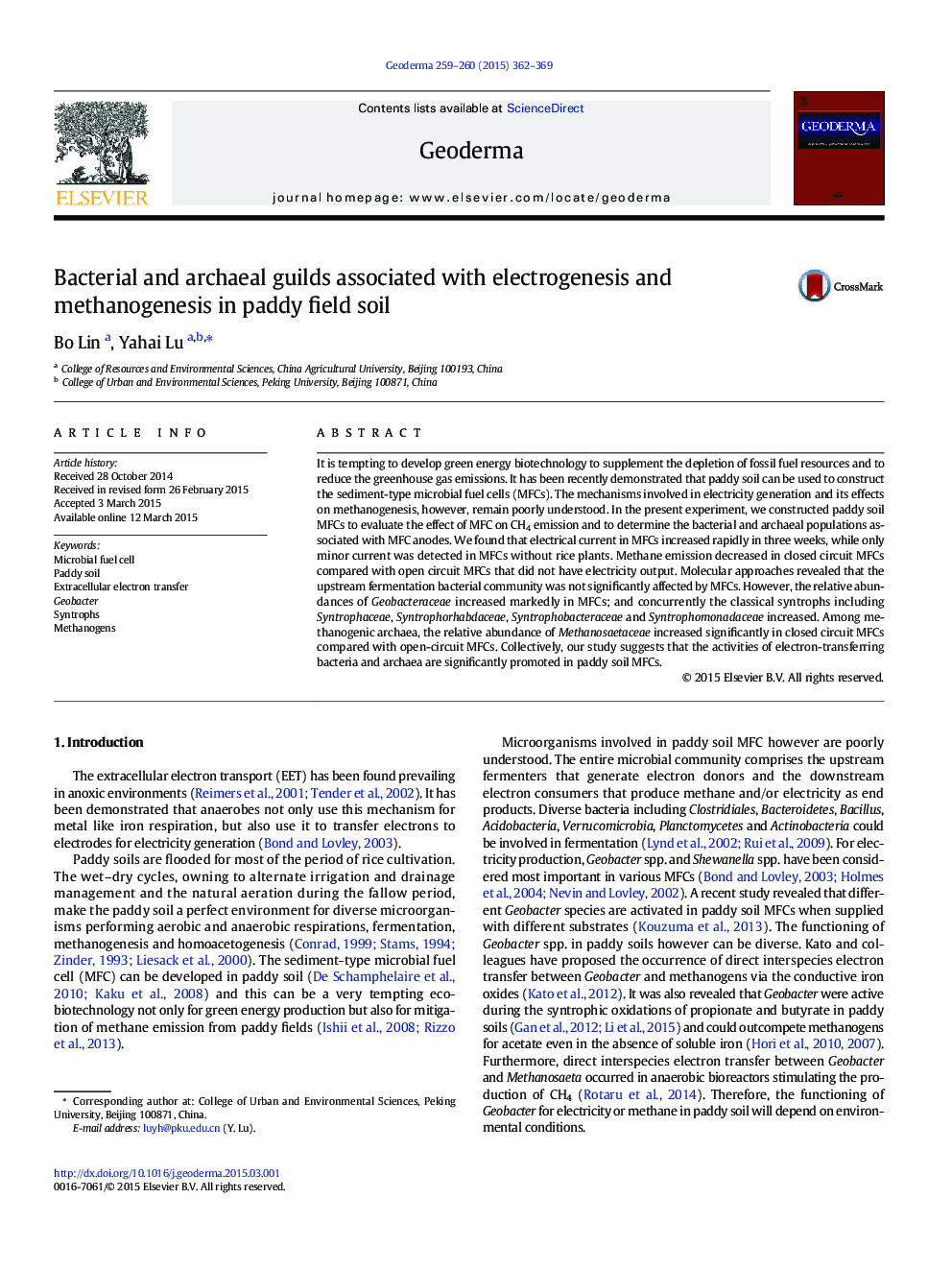| Article ID | Journal | Published Year | Pages | File Type |
|---|---|---|---|---|
| 6408545 | Geoderma | 2015 | 8 Pages |
â¢Plant growth stimulates the electricity output in paddy soil microbial fuel cell.â¢Electricity production reduces methane emissions to certain extent.â¢Setting up microbial fuel cell activates microbial electron transfer network.â¢Closed circuit shifts this network toward electrogenesis against methanogenesis.
It is tempting to develop green energy biotechnology to supplement the depletion of fossil fuel resources and to reduce the greenhouse gas emissions. It has been recently demonstrated that paddy soil can be used to construct the sediment-type microbial fuel cells (MFCs). The mechanisms involved in electricity generation and its effects on methanogenesis, however, remain poorly understood. In the present experiment, we constructed paddy soil MFCs to evaluate the effect of MFC on CH4 emission and to determine the bacterial and archaeal populations associated with MFC anodes. We found that electrical current in MFCs increased rapidly in three weeks, while only minor current was detected in MFCs without rice plants. Methane emission decreased in closed circuit MFCs compared with open circuit MFCs that did not have electricity output. Molecular approaches revealed that the upstream fermentation bacterial community was not significantly affected by MFCs. However, the relative abundances of Geobacteraceae increased markedly in MFCs; and concurrently the classical syntrophs including Syntrophaceae, Syntrophorhabdaceae, Syntrophobacteraceae and Syntrophomonadaceae increased. Among methanogenic archaea, the relative abundance of Methanosaetaceae increased significantly in closed circuit MFCs compared with open-circuit MFCs. Collectively, our study suggests that the activities of electron-transferring bacteria and archaea are significantly promoted in paddy soil MFCs.
